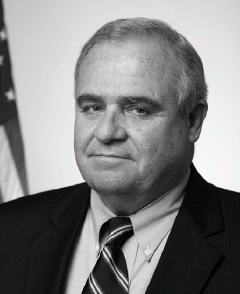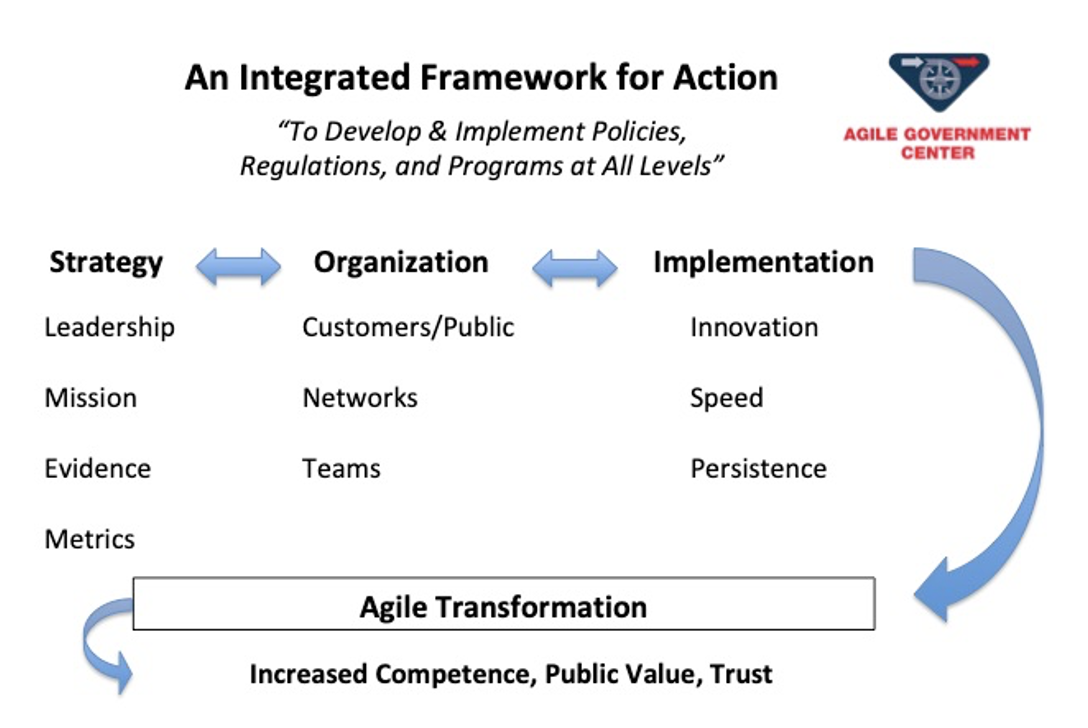This post first appeared on IBM Business of Government. Read the original article.

The Agile Government Center (AGC) is a partnership between the National Academy of Public Administration and the IBM Center for the Business of Government.
The AGC was launched in November of 2020 “to serve as the hub of a network that will bring together governments, non-profits, foundations, academic institutions and private sector partners to assist in developing and disseminating agile government principles and case studies of agile policies and programs.”
This blog is the third in a series based on the Integrated Framework for Action, described below. The AGC continues to refine the Framework and the Principles on which it is based and would be pleased to receive comments, questions and suggestions for improvement. Comments can be sent to agilegov@napawash.org
Defining Leadership
The study of leadership has deep and abiding pathways that cannot be quickly summarized. My own study of leadership has been influenced by the seminal work of James MacGregor Burns. In his 1971 book, “Leadership,” Burns distinguished between transactional and transformational leadership. The first is the everyday task of guiding of an organization in going about its assigned functions. It may include some give and take, some compromises, and even finding solutions to roadblocks.
However, Burns distinguishes this from transformational leadership which he says, “cuts more profoundly. It is “to cause a metamorphosis in form or structure.” To use an old analogy, transactional leadership may be making the trains run on time but transformational leadership enabled completion of the Intercontinental Railway which reduced the time it took to cross the nation from four months to four days.
Agile Government: Transactional and Transformational
Agile Government recognizes the nature of change associated with both transactional and transformational leadership. The working definition of Agile Government is, “An integrated framework for action where policies, regulations and programs can be developed and implemented at all levels of government creating greater competence, producing increased public value, and resulting in greater public trust.”
The phrase “at all levels of government” recognizes that the Agile Government Framework (below) is designed to work at the project, program and whole-of-government levels across policies, regulations and programs that may be either transactional or transformational. Wherever it is used, the Framework is designed to guide change. The job of the leader is to develop a mindset within the organization so that it is committed to carrying out its mission and vision with greater competence, thus creating more public value.
This change can be transactional in nature and the objectives can be to improve efficiency and competence leading to improved customer experience. However, the change can be transformational, altering the very core of the agency, the means of delivering its mission and the scope of the networks with which it works.
Single Organizational Leadership and Leading Strategic Management at Scale
A clear example of this distinction is provided by Professor John Bryson, McKnight Presidential Professor Emeritus at the Hubert H. Humphrey School of Public Affairs at the University of Minnesota. Bryson first describes leadership for a single organization which he says is, “a fairly well-known set of tasks and often involves the development of a strategic management system to ensure direction, alignment, and commitment across the organization.” Bryson then describes leading strategic management at scale.
“Such cross-boundary issues include the global COVID-19 pandemic, or U.S. domestic issues like homelessness, the lack of affordable housing, racial gaps in educational achievement, or the damage from adverse childhood experiences. Such issues occur within a shared-power, no-one wholly-in-charge environment and demand a response from multiple organizations.”
We believe that the Agile Framework can serve as the beginning of a “strategic management system” for both single organizational leadership and strategic management at scale. As noted in the first blog of this series, the attributes of the Agile Government Framework include:
- Scope: All major activities of government—regulations, policies and programs at all levels of government – are included.
- Clarity of Purpose: Agile Government is intended to be transformational, radically improving competence increasing public value and trust.
- Strategic Approach: Strategy “links aspirations and capabilities” (as John Bryson suggests.)
- Principles Based: The Framework is supported by 10 underlying Principles (shown in the graphic below) that are evolving—in a truly agile fashion—as more useful information is developed and incorporated.
- Tested using Stories and Cases: The Agile Government Center has developed—and continues to solicit—examples of governments using agile techniques to achieve mission results. We have found that some governments consciously use Agile Principles, while others achieve their success without explicit reference to the Principles.
- Evolving, Not Static: The graphic below will change as we receive comments for how it can be improved.
The Future of Agile Government
The publication of “Agile Regulations: Gateway to the Future” demonstrates how Agile Government can provide the basic tenets for future action. The AGC is working in the areas of program implementation and policy development to create similar sets of tenets. The Center anticipates releasing a publication entitled, “The Future of Agile Government” in the fall of this year which will synthesize the Agile Government Framework and present further research for the future.
Next Steps
The AGC solicits your comments on this blog and other work that we have done. We also are seeking stories and cases on agile government. These can be sent to agilegov@napawash.org. Next in this series is Agile Mission and Strategy which will explore how the shaping of an organization’s mission can contribute to its ability to execute its strategy in an agile fashion.

